> See 2008 Projects | 2009 Projects | 2010 Projects | 2011 Projects | 2012 Projects | 2013 Projects | 2014 Projects
The following nineteen projects were selected from among 71 proposals submitted in 2011. Award recipients will create web-accessible records according to standards that will enable the federation of their local cataloging entries into larger groups of related records, enabling the broadest possible exposure to the scholarly community.
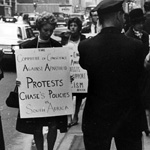 Amistad Research Center, Tulane University
Amistad Research Center, Tulane University
Increasing Access to Africana Collections: The American Committee on Africa and The Africa Fund Records
$238,200
This three–year project focuses on two organizational collections devoted to the decolonization of Africa. The American Committee on Africa (1953–2001) and The Africa Fund (1966–2001) worked to educate the American public and American policymakers on the legitimacy of African liberation movements and to provide assistance to liberation movements and the victims of colonial oppression in Africa. The collections consist of 520 linear feet of the publications and records of the American Committee on Africa addendum (1968–2001) and The Africa Fund (1966–2001). The processing of these records will expand access to materials that document human rights and political activities within many African countries, United States relations with Africa, as well as divestment campaigns and anti-apartheid and pro-African liberation movements in the United States and throughout Africa. These collections provide a comprehensive picture of two important, related liberal reform organizations, with insight into the sociology of left–liberal political groups of American and African activists.
The Gordon Hall and Grace Hoag Collection of Dissenting and Extremist Printed Propaganda, Part II
$376,100
This three–year project will complete the processing of the materials Gordon Hall began compiling when he returned from World War II and encountered U.S. domestic hate groups at both ends of the political spectrum. Along with a group of volunteers, including Grace Hoag, he infiltrated and investigated radical and dissenting groups, collecting their printed propaganda as part of his efforts to preserve these irreplaceable materials for posterity. Only the 168,000 items representing 5,500 organizations found in Part I of the collection have been processed, documented and made available to the public so far. This project will uncover the much larger, unprocessed and inaccessible Part II, comprised of 800 cartons (2,400 linear feet or ca. 700,000 items). The materials reflect a continuum of views on issues such as the Cold War, civil and women’s rights, and the relationship of religion and state. The focus is on printed organizational literature, often ephemeral, some for circulation among adherents and others used to proselytize. The collection consists largely of pamphlets and leaflets, with smaller numbers of photos, audio–visual items, manuscripts, and monographs.
Center for Jewish History
Illuminating Hidden Collections at the Center for Jewish History
$229,600
This two-year project will uncover the histories of Jewish political and cultural organizations in the United States, including the Yidisher Teatr Gezelshaft in Detroit and the American Association for Jewish Education. Also included are dozens of collections that describe the stories of Jews leaving Germany for America and Israel prior to WWII. The collections included in this initiative encompass the stories of Jewish migration, establishment and assimilation over the last 150 years. Three of the Center’s in-house partner institutions, the American Jewish Historical Society, the Leo Baeck Institute, and the YIVO Institute for Jewish Research, are participating in the project.
Dance Heritage Coalition
Foundations of Dance Research (Foundations)
$350,000
The two–year Foundations project includes materials relating to dance performance, theory, and education in twenty–two collections held by seven institutions: Arizona State University, Dance Notation Bureau, Library of Congress, Museum of Performance & Design, The Ohio State University, Jacob’s Pillow Dance Festival, and the University of California, Los Angeles. Among the personal collections included in the project are those of modern dance pioneers Ruth St. Denis, Ted Shawn, Shawn’s associates Jess Meeker and Barton Mumaw, second generation modern dancer and choreographer Kenneth Rinker, postmodern dancer Robert Ellis Dunn, film dancer Marge Champion, mime specialists Sandra Hughes and Robert Post, ballet dancer and company director Michael Smuin, scholar and ethnologist Allegra Fuller Snyder, critic and writer Janice Ross, Dalcroze eurhrymics teacher John Colman, Dalcroze biographer and musicologist Irwin Spector, and dance notation creator Rudolph Laban. Organizations represented among the collections include : the San Francisco Ballet, the Dance Notation Bureau, the Dalcroze Society of America, the AXIS Dance Company, Lily Cai Chinese Dance Company, the Joe Goode Performance Group, the San Francisco Butoh Festival, SFJazz’s Tap–Jazz Summit, and Theatre Flamenco.
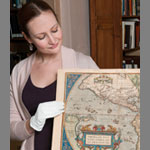 Fray Angélico Chávez History Library, Museum of New Mexico Foundation
Fray Angélico Chávez History Library, Museum of New Mexico Foundation
Mapas históricos de Nuevo México = Historic New Mexico Maps
$179,600
This three–year project will make one of the most important collections of the Fray Angélico Chávez History Library accessible to a wide range of researchers, historians, students and the general public. The History Library’s map collection consists of nearly 6000 maps on New Mexico and the Southwest region that provide valuable historical information on topics as diverse as early Spanish exploration, American settlement in the Southwest, famous roads like the Camino Real and the Santa Fe Trail, water rights, the development of cities and counties, and more. The materials include blueprint railway maps, surveyors’ maps for Western expansion, topographical maps, and the hand–drawn, 18th–century manuscript maps of Bernardo de Miera y Pacheo. At left: Laura Kohl, Project Cataloger and Archivist.
Georgetown University, Lauinger Library
Undiscovered Printmakers: Hidden Treasures in Georgetown University’s Library
$95,200
This eighteen–month project will make available to scholars the personal collections of six significant twentieth century American printmakers. Included are the papers of renowned wood engravers and book illustrators Lynd Ward (1905-1985), whose influential “wordless novels” are widely regarded as among the earliest American graphic novels; and the preeminent printmaker John DePol (1913-2004). The project will also make available the artwork of four highly talented but underappreciated women printmakers of the same period: Louise Miller Boyer (1890-1976), Helen King Boyer (b. 1919), Marguerite Kumm (1902-1992), and Kathleen Spagnolo (b. 1919). The materials to be cataloged are mostly prints, drawings, and printmaking matrices, including the woodblocks for Ward’s earliest graphic novels. Several of the collections, notably Ward’s, are complemented by substantial archives of correspondence and manuscripts, ideal resources not only for the scholarly study of the artists’ experimental working methods, but also for use in teaching.
History San José
Documenting Technology Innovation: Perham Collection of Early Electronics
$86,600
The Perham Collection of Early Electronics preserves rare books and ephemera, trade manuals, personal papers and archives, 1200 photographs, and 2500 electronics devices from some of the earliest commercial ventures in electronics in the Western United States from the 1890s to 1960. The Collection, received largely unprocessed from the Perham Foundation in 2003, augments existing History San José (HSJ) museum and archival collections that document the evolution of the region and the intersection of technology and society. This one–year project will provide access to five manuscript collections within the Perham Collection, and relate these to objects, books, and photographs already in the HSJ online catalog. These collections are: 1) The Lee de Forest papers, which comprise the largest collection documenting this award-winning radio and motion–picture inventor, 2) Research notes and correspondence of Jane Morgan, author of “Electronics in the West,” 3) Rare materials from Federal Telegraph Company (1909-1929), one of Silicon Valley’s earliest successful start–ups, 4) Engineer and inventor Harold Elliott’s papers, and 5) the Perham Historical Files, a collection of ephemera, notes, manuscripts, and other items pertaining to hundreds of people, companies, and technical developments.
Merchant Mariners Muster: Cataloging Crew Manuscripts
$125,600
This eighteen–month project will uncover forty–four separate manuscript collections relating to shipping, including numerous Maine sea captains’ business papers, some ship owners’ and customs house records, and a shipping agent’s records. Most of the individuals documented in the collections are merchant mariners, but there are also some fishermen and naval seamen represented among the materials. The collections cover the late eighteenth through early twentieth centuries; all the collections relate to Maine, but since they document travels to major and minor ports all over the world, they are a valuable resource for the exploration of maritime history world–wide. Collection highlights include : crew lists and accounts; important and revealing correspondence between captain and owner; correspondence with family; construction details of ships; charter, cargo and insurance information; and detailed documentation of port visits. At left: The crew of the four–mast steel bark Arthur Sewall, taken at Hiogo, Japan in 1902.
Mennonite Heritage Center, Mennonite Historians of Eastern Pennsylvania, Inc.
The Pennsylvania German Textiles of the Goshenhoppen Historians, the Mennonite Heritage Center and the Schwenkfelder Library & Heritage Center
$98,500
The Pennsylvania German textile and clothing collections in this two–year collaborative project are a rich record of a southeastern Pennsylvania immigrant group that settled the state in the late seventeenth century and who continued as a distinct group through the early twentieth century. The collections, primarily of linen and wool, include functional textiles such as woven coverlets, bedding, tablecloths and grain bags, along with decorative work like samplers and show towels. Manuscripts such as weavers’ account books, diaries recording fiber and weaving activities, and estate inventories of valuable bedding are also included in the collections, as are tools such as spinning wheels and looms. Taken together, the collections will provide scholars with increased understanding of the significance of early textile production to the Pennsylvania German community. Clothing artifacts from the collections document the similarities and differences in textile weaving practice between the Schwenkfelder and Mennonite religious sects, as well as influences of cultural changes within the broader American society.
Cataloging Artifacts and Related Records of the World Trade Center Attack on September 11, 2001
$120,000
The materials that are the subject of this one–year project comprise five general categories: 1) posters, letters, photographs and other ephemera left by the families of the victims at Pier 94, the temporary family service center established after the World Trade Center attacks, and at the 9/11 memorial sites on the footprint of the towers; 2) material placed in City parks and other public places in the aftermath of the event; 3) artifacts of the World Trade Center buildings, vehicles, and other items recovered from the site, via Fresh Kills, Staten Island, where the debris had been brought for screening; 4) brochures and other printed material prepared by the Mayor’s Community Assistance Unit to assist the victim families; and 5) correspondence sent to the Mayor’s office and rescue workers. Once made accessible, these materials should be of keen interest to political, social, and cultural historians investigating the American response to the September 11 attacks as well as the broader topics of memory, commemoration, and grief in the public sphere. At left: Artifacts from Ground Zero memorial pool, September 11, 2008.
The New-York Historical Society American Almanac Collection
$255,700
The New–York Historical Society’s two–year project will uncover a collection of approximately 5,500 eighteenth, nineteenth, and early twentieth century American almanacs, including an estimated 600 almanacs dating from before the year 1801. The collection is strongest in almanacs published in New York State, New Jersey, Pennsylvania, Connecticut, Rhode Island, Massachusetts, Vermont, and New Hampshire, but it also includes representative examples from other states east and west of the Mississippi. Highlights include the only known copies of early eighteenth–century editions of Daniel Leeds’s American Almanack, printed in New York by William Bradford; the earliest almanac printed in New Jersey, Poor Roger, 1760; and Confederate almanacs printed in Vicksburg, Mississippi, Mobile, Alabama, and Charleston, South Carolina. Project staff will catalog each almanac at the item level to provide accurate physical description, describe printing variants, and record copy–specific information such as annotations, inscriptions, provenance, and marginalia. The collection, which will be accessible for the first time as a result of this project, offers valuable insights into American life and the way Americans experienced contemporary events, nature, science, and society over the course of 200 years, and provides an important resource for the history of printing and publishing in the United States. At left: From title page to The American Almanack, Leeds, 1706.
 North Carolina State University Libraries
North Carolina State University Libraries
Acting for Animals: Revealing the Records of Animal Rights and Animal Welfare Movements
$219,600
This two–year project will make accessible collections documenting the animal rights and animal welfare movements, including records of the Animal Rights Network (ARN), portions of the records of the Animal Welfare Institute (AWI), and the Ron Scott Videotapes. The ARN records contain files from animal welfare organizations around the world and much correspondence documenting the coordination of the animal welfare movement, as well as debates among activists from the 1970s to ca. 2000. The collection also features hundreds of subject files on topics related to animal welfare and files documenting groups opposed to the animal welfare movement. The AWI collection contains correspondence and other material related to the activities of AWI and its lobbying organization, the Society for Animal Protective Legislation (SAPL). The bulk dates from the late 1950s to 1990. Although these materials focus on events in the United States, they include a large number of files on international issues, reflecting AWI/SAPL’s cooperation with groups in other countries and key involvement in issues such as whaling and the exotic animal trade. The ARN and AWI collections also include many published items from a wide range of groups around the globe, including books, pamphlets, newsletters, and reports. Finally, the project will catalog hundreds of audio and video tapes documenting conferences, demonstrations, debates, and oral histories with important figures in the animal welfare movement. These audiovisual materials are found mainly in the Ron Scott Videotapes, but also among the AWI papers.
Rutgers, the State University of New Jersey
Cataloging Women in Jazz Collections at the Institute of Jazz Studies
$165,000
This two-year project deals with five separate archival collections of prominent women in jazz. The first four include : the papers of Ella Fitzgerald (1917–1996), known as America’s “First Lady of Song,” whose collection includes music manuscripts, artwork, and memorabilia; Abbey Lincoln (1930–2010), a singular vocal stylist, composer, and civil rights activist, whose holdings include notebooks of her writings, scrapbooks, music manuscripts and scores, and video and audiocassettes of unissued performances and interviews; singer and “vocalese” pioneer Annie Ross (1930–), still active and recently named an NEA Jazz Master, whose collection includes music manuscripts, personal papers, and photographs, and audio and videotapes of interviews and performances; and blues singer Victoria Spivey (1906–1976) whose career extended from 1920s recordings with jazz legends King Oliver and Louis Armstrong to a 1960s association with young admirer Bob Dylan. Spivey’s collection, a subset of a larger one belonging to producer and recording historian Len Kunstadt, consists of correspondence, photographs, business records, discographical research, and unissued session tapes. The final collection to be processed during the project focuses on Wilma Dobie (1918–2005), a pioneering promoter, journalist, and jazz activist, whose collection consists of photographs, correspondence, programs, clippings, artist files, and memorabilia, as well as extensive archival materials pertaining to the career of the early jazz bandleader Fate Marable (1880–1947).
Capturing History: Cataloging the San Diego Museum of Man’s Photographic Collection
$115,200
This two–year project will catalog a collection of 25,000 photographs taken from 1890 to the mid–1900s depicting the history of San Diego and the surrounding area. These photographs consist of assorted media, including albumen prints, glass negatives, and daguerreotypes. The images reveal a comprehensive pictorial study of life in the greater San Diego area, ranging from early contact with Native Americans up through the Panama–California Exposition and development of Balboa Park. Many of the photographs in the collection were gifted to the Museum in conjunction with related artifacts. Abbie Boutelle, Constance Goddard DuBois, Malcolm Rodgers and E.H. Davis are among the prominent San Diegans featured in the collections. Once made accessible, the photographs will be valuable to those interested in researching and understanding the history, culture, and archaeology of the greater San Diego region.
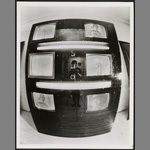 Smithsonian Institution, Archives of American Art
Smithsonian Institution, Archives of American Art
Uncovering Hidden Audio Visual Media Documenting Post-Modern Art at the Archives of American Art
$222,700
This three–year project will increase access to media–rich archival collections documenting national movements in contemporary American art through archival processing and the creation of EAD (Encoded Archival Description) finding aids. The media in these collections document a period of contemporary American art when ephemeral and dynamic new visual art forms were emerging in studios, art communities, galleries, and art spaces across the country. These collections contain media–based elements of the artwork itself, such as sound art, video art, or multimedia art forms, as well as media–based archival documentation of environmental art, conceptualism, performance, minimalism, or technology–based arts installations. In many instances, this archival documentation is the only remaining evidence of the artwork. The collections contain a mix of traditional paper records and audiovisual media objects in all formats. While the primary objective of the project is to make collections available to users, project staff will also develop and document an archival approach to processing audiovisual media in the context of an archival collection, rather than as isolated items. Guidelines, procedures, benchmarks, and tools created during the project will be made available to interested repositories through a symposium, professional conferences, listserv postings, and the Archives’ website. At left: Les Levine takes a picture of his television sculpture ‘Iris’ as ‘Iris’ takes a picture of him, ca. 1968. From the Exhibition records of the Contemporary Wing of the Finch College Museum of Art, 1964-1975. Archives of American Art.
Texas A&M University, Cushing Memorial Library and Archives
Discovering a New World: Cataloging Old and Rare Imprints from Colonial and Early Independent Mexico
$84,500
The Mexican Colonial Collection at the Cushing Memorial Library and Archives at Texas A&M University consists of over 3,000 books, manuscripts, broadsides, newspapers, pamphlets and devotionals covering all aspects of life in Mexico (New Spain) from the mid–16th to the mid–19th centuries. The collection is of interest to scholars in the fields of history, anthropology, linguistics, religion, political science, philosophy, civil and canon law, literature, military science, the history of the book, and the sciences and arts. There are documents from the tribunal of the Inquisition, as well as other legal documents; early catechisms and textbooks in native languages; sermons; prayer books; newspapers and speeches concerning Mexico’s independence movement, and cookbooks. A substantial number of items have been cataloged already and are searchable via WorldCat and the Libraries’ online catalog. Over two years, the grant will complete cataloging for the collection, describing an estimated seven hundred manuscripts, broadsides, documents and ephemera; approximately five hundred printed monographs; about fifty bound volumes of serials (chiefly newspapers); and one painting.
 University of California at Berkeley, Museum of Vertebrate Zoology
University of California at Berkeley, Museum of Vertebrate Zoology
Cataloging Hidden Archives of the Museum of Vertebrate Zoology: Increasing Integration and Accessibility for Interdisciplinary Research
$481,800
The three–year project to process the Museum of Vertebrate Zoology (MVZ) archives will provide access to evidence of the historical, ecological, legal, and sociological context for the vertebrate specimens that comprise the Museum’s collections. The archives document the expeditions, research, and views of prominent western pioneers, evolutionary biologists, and conservationists (e.g., Annie Alexander, Charles L. Camp, Joseph S. Dixon, Joseph Grinnell, Alden Miller, Robert Stebbins, and many others) from the late 19th century to present. Joseph S. Dixon, for example, was a well known conservationist who organized the first wildlife surveys in U.S. national parks, and led the Park Service to protect endangered species and fragile habitat. The archives also include detailed field notes and annotated maps from over three hundred scientists and students, thousands of pages of correspondence, original artwork used in seminal publications, and photographic documentation of field sites, specimens, and animal observations in various formats (prints, negatives, 35mm slides, lantern slides, glass photo plates, digital). These archives will be useful to scientists, historians, teachers, government agencies, and public policymakers. They provide the foundation for efforts to resurvey vertebrates throughout North America to document and understand change either directly or indirectly through human activity and climate.
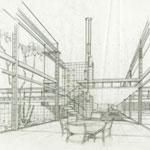 University of California at Santa Barbara, University Art Museum
University of California at Santa Barbara, University Art Museum
Cataloguing Southern California’s architectural history
$183,500
The Architecture and Design Collection comprehensively and uniquely documents the history of the built environment of Southern California. This three-year project will address 240 uncatalogued archives. These include the papers of individuals-architects, landscape architects, designers, and a critic-and the records of design firms. Familiar names represented in the archives include, F.L. Wright, Esther McCoy, Case Study houses, Thornton Ladd, Carleton Winslow, A.E. Hanson, William Pereira, Charles Moore, and Barton Myers. Materials date from the late 19th through the late–20th century and document the responses of architects to the climate, landscape, and early architecture of California influenced by Mexican and Spanish sources. Archives document early and late Modernism, urban planning, and experiments in low–cost and system–built housing. These and many other topics can be traced through multiple archives, which comprise drawings, documents, photographs, audiovisual materials, artifacts, and models. Six frequently used archives will be fully cataloged as part of the project: the John Byers papers, 1919-1966; the Roland Coate papers, 1922-1958; the Rex Lotery papers, 1970-1999; the Maynard Lyndon papers, 1936-1991; the John Elgin Woolf papers, 1938-1980, and the Walter S. White papers, 1939-1994. These six archives comprise circa thirty-six linear feet of documents and photographs, and over six thousand drawings.
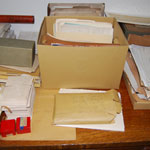 University of Wisconsin at Milwaukee, American Geographical Society Library
University of Wisconsin at Milwaukee, American Geographical Society Library
Providing Access to the Archives of the American Geographical Society
$259,900
This is a three–year project to organize, catalog and conserve the Archives of the American Geographical Society. These archives date from the Society’s founding in 1851 and include approximately 540 cubic feet of material, with documents relating to well known figures in American exploration and the larger field of geography from the mid–nineteenth century through most of the twentieth. Highlights include log books of early Arctic expeditions, the papers of Robert F. Peary (who served as President of the Society), the American flag carried by Robert F. Byrd on his 1929 flight to the South Pole, and correspondence with such individuals as Field Marshal Sir Edmund Allenby, George Kennan (the earlier), Franklin D. Roosevelt (a councilor) and William H. Seward. The historian of geographical thought, Geoffrey Martin, wrote: “I consider the AGS collection the finest of its kind in North America. It is indispensable to research concerning the history (and inner workings) of American geography. The Society was the first of its kind to be founded in this country, and gathering and collecting…have led to a trove of letters, documents, illustrations, [and] offhand maps…without compare.” The ultimate goal is to provide online access to these materials.

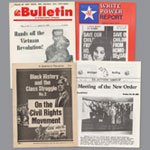 Brown University Library
Brown University Library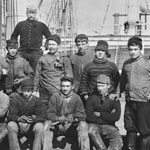 Maine Maritime Museum
Maine Maritime Museum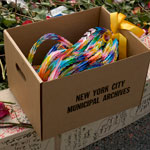 The New York Archival Society
The New York Archival Society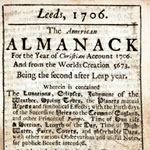
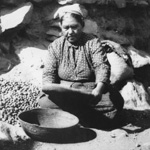 San Diego Museum of Man
San Diego Museum of Man